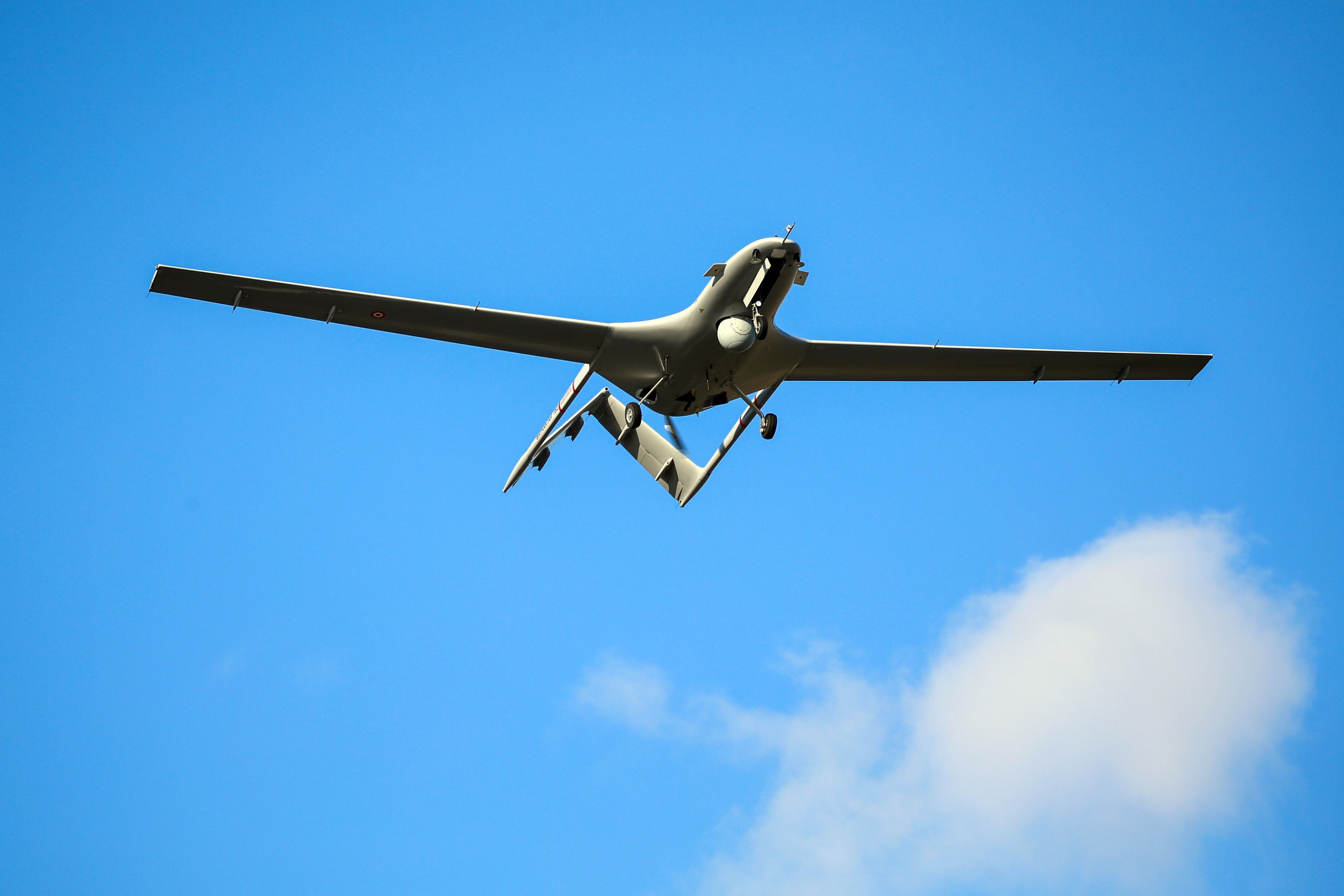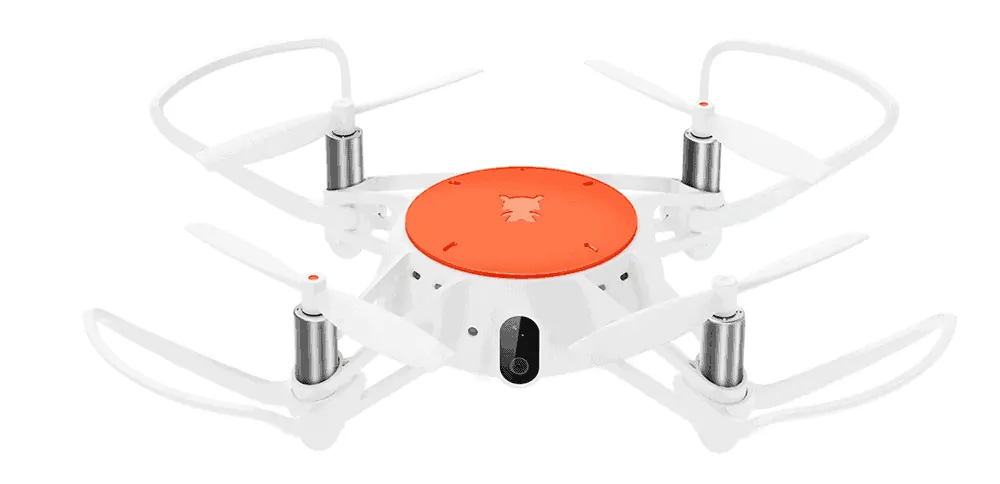Unmanned vehicles are known as drones, and are capable of moving through the air without the need for a pilot on board. They are controlled remotely or through programming using software and GPS.
Drones are used in a wide variety of areas ranging from the military field, professional photography and even personal use. They can move quickly over uneven terrain and easily overcome obstacles, this gives them great versatility. This industry has experienced exponential growth in recent years and that is why it is more common to see them with recreational use.
If you want to get started in this hobby, it is necessary to take several things into account since there are a large number of drone modules, all with different characteristics and prices.

What types of drones are there?
Drones for civilian use
Within civil use, many other uses can be distinguished, from toys to those used for commercial use. Therefore there are drones for children's use, designed for indoor flights and easy to use and at an affordable price. For adults and those who already show a little more experience or interest in this type of device, the next leap is drones for amateur use.
These types of drones have a higher price since they are more equipped drones and with more sensors, motors and offer other types of benefits. Before purchasing this type of drone, we advise you to read our recommendations.
And finally, there are drones that are for professional use. These types of offer a greater flight range and are usually equipped with all kinds of systems that promote safer flight outdoors and may have GPS in real time to be able to locate them at all times.
Drones for military use
The first drones were born for use in the military field and to this day they continue to be used for many tasks within this field. Within the military industry, drones are not only used for combat, they also have other functions such as supplying supplies, locating human lives and examining terrain that is difficult to access.

How are drones classified?
Rotary wing
They are the most widespread type of drone and used both at a leisure and professional level. They are also known as multirotors and can be classified in turn into:
- Tricopters (3 engines)
- Quadcopters (4 engines)
- Hexacopters (6 engines)
- Octocopters (8 engines)
They are drones that can take off and land vertically and from practically any surface, their great drawback is related to the flight autonomy they offer. For some types of tasks we must have several spare batteries to replace them.
Fixed wing
Fixed-wing drones are those that are capable of taking advantage of the air and generating forces that allow them to stay in the air, taking advantage of their aerodynamics. They have a design and aesthetics similar to that of an airplane and are usually used to map large areas thanks to their great autonomy.
The main drawback with respect to rotary-wing drones is that fixed-wing drones cannot maintain flight over a certain point and that they cannot take off autonomously. These types of drones require that we drive or launch ourselves to start the flight.
How to choose my first drone?
If you want to buy your first drone and you don't know where to start, we suggest you take into account the following characteristics.
- Handling: The most important feature if you are starting out in this hobby. What you should keep in mind is that the drone has a flight stabilizer, this technology allows it to remain stable vertically. In this section we also recommend you investigate whether the drone has its own remote control or the smartphone is used for that, since you may feel more comfortable with one of the options or you will need more practice time to use it outdoors.
- Autonomy: Look for a drone with an acceptable flight time, this way you can enjoy more flight time and have more time to practice. Some drones can overheat so it is advisable to let it rest for about 15 minutes between flights.
- Resistance: Look for a drone that is resistant to blows, since in your first hours of flight it will most likely receive many of them. Don't forget to use the propeller guards as an extra protective measure.
- Camera: If you are looking to use the drone for audiovisual purposes, then you should review the characteristics of the camera and find which one suits your needs.
What are the best drones for beginners?
DJI Tello
The DJI Tello is a great option to start with the hobby of drones. It has 720p HD transmission and a 100-meter range, the DJI Tello Mini is the most stable model you will find for beginners, it reduces vibrations and movements during video recording and image capture.

Syma X5C
The Syma X5C is a drone for beginners with an HD camera that has powerful motors that will allow you to perform stunts and make it roll up to 360º on its own axis.
It is very small, at only 150 grams it is capable of combating moderate winds and it comes with a satisfactory battery life. Although if you plan to take it on a trip, we recommend that you buy another extra battery.

Xiaomi MITU
The Xiaomi MITU Mi Rabbit is one of the best camera drones on the market since it is equipped with an HD camera and is great for taking selfies, you can also take it with you comfortably since it is controlled from a mobile or tablet and does not need a radio control .
The body of the drone is made of polypropylene, a shock-resistant material, and the propellers are made of fiberglass. So it will resist how many blows you give it while you learn to fly it effectively.

Sansisco D15
This is one of the best drones for beginners since it has a great value for money, for little money it has a foldable drone with an HD camera, it can maintain altitude and it is controlled with gestures.
A perfect drone for those who are looking for a device with which to start flying making aerial videos. Due to its size, it is perfect for both indoor and outdoor flights without wind.

Potensic T25
The Potensic T25 is fast, small enough to fly indoors, and comes with Follow Mode for first-time users. It incorporates a 2K camera. The radio control has a support to place the smartphone and drive watching the images in real time.
Thanks to the GPS positioning system, the drone can return to the take-off location with tremendous precision. In addition Potensic has used high quality plastic for the construction. The drone feels solid enough to absorb a few bumps, so it'll be safe while we learn to fly it.

Would you like to fly drones or do you already? What other advice could you give to someone who is starting out in the hobby of flying a drone? Tell us about your experiences in the comments.

Comentarios